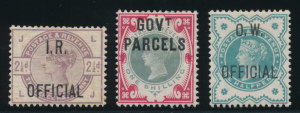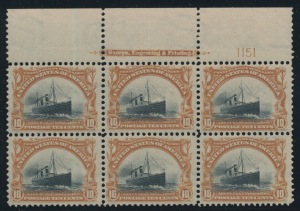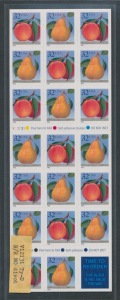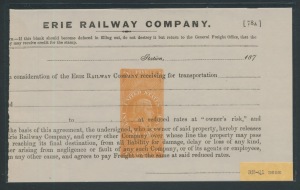The history of our hobb y can be divided into four phases. The first is the 1860-1910 period. This was the birth of philately, where collectors first began to acquire stamps. It was when the first catalogs and albums were developed as were the basic rules for quality and what is appropriate to put into collections (genuine vs reprints etc). The tools of our hobby (perf gauge, tongs and watermark tray were developed at this time too). The second period (1910-1950) was the period when collectors expanded the boundaries of the hobby in response to the increasing popularity of philately. First
y can be divided into four phases. The first is the 1860-1910 period. This was the birth of philately, where collectors first began to acquire stamps. It was when the first catalogs and albums were developed as were the basic rules for quality and what is appropriate to put into collections (genuine vs reprints etc). The tools of our hobby (perf gauge, tongs and watermark tray were developed at this time too). The second period (1910-1950) was the period when collectors expanded the boundaries of the hobby in response to the increasing popularity of philately. First
Blog
- Posted April 30, 2018Read more »
- Posted April 27, 2018Read more »
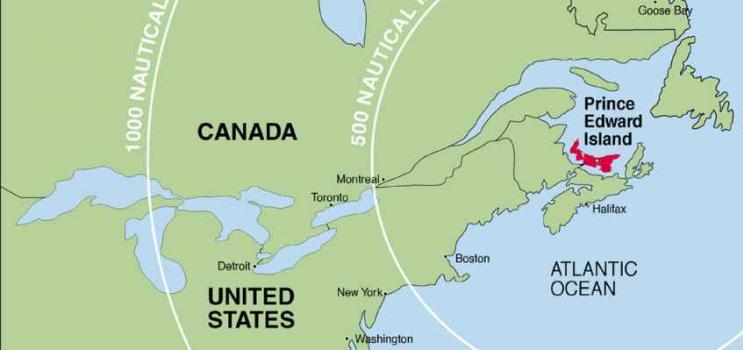 There are a handful of countries that issued stamps from the very first period of philatelic issues which, through a confluence of historical circumstances, have come down to us as philatelic countries where collectors can obtain all of the stamps for a modest price. Two factors are usually necessary for this to happen. First, the issues need to be plentiful enough, or unpopular enough, that the stamps are not too expensive. And second, the country has to have had a short lived philatelic history so that there are not too many different stamps. Some countries such as Saxony issued less than twenty different stamps before being incorporated into the German Empire in 1870. But the rarity and price of the first stamp of Saxony (Catalog value currently $5500) has always kept Saxony off this list.
There are a handful of countries that issued stamps from the very first period of philatelic issues which, through a confluence of historical circumstances, have come down to us as philatelic countries where collectors can obtain all of the stamps for a modest price. Two factors are usually necessary for this to happen. First, the issues need to be plentiful enough, or unpopular enough, that the stamps are not too expensive. And second, the country has to have had a short lived philatelic history so that there are not too many different stamps. Some countries such as Saxony issued less than twenty different stamps before being incorporated into the German Empire in 1870. But the rarity and price of the first stamp of Saxony (Catalog value currently $5500) has always kept Saxony off this list. - Posted April 26, 2018Read more »Lanie Murphy was a lucky young woman. On her twenty first birthday, her grandfather gave her a group of stamps that he had received from his father when his father died. The great-grandfather was never a stamp collector; rather, in the 1920's, flush with money from his job on Wall Street, he bought a mint block of four of every new issue as it came through the Post office near his office. Many people bought stamps like this during the 1920's. Lanie's great-grandfather bought them, put them in glassines, and never looked at them again. They remained in perfect quality, which, more than their rarity, made them very valuable.It is obvious that all mint stamps from the classic period of philately started out as perfect. Each mint stamp was purchased at the
- Posted April 24, 2018Read more »
 The last comprehensive catalog of Revenue Stamps of the World was issued by the French dealer Forbin in the year 1915. After that date, the collecting of worldwide revenue stamps began to fall off in popularity. In a very few countries, the United States and France come to mind, the collecting of native revenue stamps continued to be popular. But for the vast majority of the world, by 1930, Revenues simply were not collected anymore. The reason was simple. By 1930 there were enough worldwide stamps (and even within countries enough specialized stamps) to keep all but the most ardent philatelists happy. So Revenues became less popular and in hobbies, less popularity breeds lesser popularity until, today, it is a very unusual collector, indeed, who collects any revenue stamps at all.
The last comprehensive catalog of Revenue Stamps of the World was issued by the French dealer Forbin in the year 1915. After that date, the collecting of worldwide revenue stamps began to fall off in popularity. In a very few countries, the United States and France come to mind, the collecting of native revenue stamps continued to be popular. But for the vast majority of the world, by 1930, Revenues simply were not collected anymore. The reason was simple. By 1930 there were enough worldwide stamps (and even within countries enough specialized stamps) to keep all but the most ardent philatelists happy. So Revenues became less popular and in hobbies, less popularity breeds lesser popularity until, today, it is a very unusual collector, indeed, who collects any revenue stamps at all. - Posted April 23, 2018Read more »
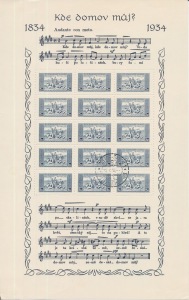 Czechoslovakia has all of the markers for a popular philatelic country. It has a highly educated population. As a central European country, its population shares many characteristics with the Austrians, Swiss, and Germans- all of whom are avid collectors. Since the downfall of communism and the introduction of the free market, Czechoslovakia should be an active collectors market with increasing stamp prices. But the popularity of Czechoslovakia has never been as great as outsiders imagine that it should. The reason probably is that the many nationalities that were united to form Czechoslovakia never warmed to the stamps of their pieced together nation and are more attracted to the stamps of the component states with which they are more associated. And second, the vast number of Czechoslovakian stamps are daunting to anyone wishing to collect them. This is true of all of the former communist block countries. The many thousands of stamps issued since WWII makes for lower collector interest.
Czechoslovakia has all of the markers for a popular philatelic country. It has a highly educated population. As a central European country, its population shares many characteristics with the Austrians, Swiss, and Germans- all of whom are avid collectors. Since the downfall of communism and the introduction of the free market, Czechoslovakia should be an active collectors market with increasing stamp prices. But the popularity of Czechoslovakia has never been as great as outsiders imagine that it should. The reason probably is that the many nationalities that were united to form Czechoslovakia never warmed to the stamps of their pieced together nation and are more attracted to the stamps of the component states with which they are more associated. And second, the vast number of Czechoslovakian stamps are daunting to anyone wishing to collect them. This is true of all of the former communist block countries. The many thousands of stamps issued since WWII makes for lower collector interest. - Posted April 20, 2018Read more »
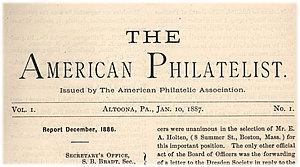 The New York Review of Books is a literary magazine that began publishing in the 1960s. Issued twenty or so times a year, it carries book reviews and articles on contemporary issues written by a large group of the finest thinkers and academics of our time. The magazine is a bi-monthly journey into the world of ideas, escorted by the best intellectual guides. Like all periodicals of this type, the problem is that great articles of ten years ago are still great, even if the periodical format means that they are never read again. What the N.Y.R.B. has done, however, is put their entire publication history on line. Subscribers have access to over 2,500 wonderful articles about books and thinking. If you like this sort of thing, it makes for some of the most amazing reading.
The New York Review of Books is a literary magazine that began publishing in the 1960s. Issued twenty or so times a year, it carries book reviews and articles on contemporary issues written by a large group of the finest thinkers and academics of our time. The magazine is a bi-monthly journey into the world of ideas, escorted by the best intellectual guides. Like all periodicals of this type, the problem is that great articles of ten years ago are still great, even if the periodical format means that they are never read again. What the N.Y.R.B. has done, however, is put their entire publication history on line. Subscribers have access to over 2,500 wonderful articles about books and thinking. If you like this sort of thing, it makes for some of the most amazing reading. - Posted April 19, 2018Read more »Some of the mo
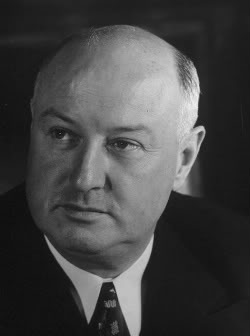 st popular US philatelic issues of the twentieth century are the Farley issues. They are Scott #753-771, and though avidly collected today, like many popular stamps, they had a checkered past. James A. Farley was a New York party politician who was instrumental in Franklin Roosevelt's rise to the Democratic party nomination for President in 1932. Farley was rewarded for his help by being made Postmaster General. In the days before the Commerce Department, the Postmaster Generalship was the greatest patronage package in the President's gift box. Before the Postal Service was independent, the Postmaster general
st popular US philatelic issues of the twentieth century are the Farley issues. They are Scott #753-771, and though avidly collected today, like many popular stamps, they had a checkered past. James A. Farley was a New York party politician who was instrumental in Franklin Roosevelt's rise to the Democratic party nomination for President in 1932. Farley was rewarded for his help by being made Postmaster General. In the days before the Commerce Department, the Postmaster Generalship was the greatest patronage package in the President's gift box. Before the Postal Service was independent, the Postmaster general - Posted April 17, 2018Read more »
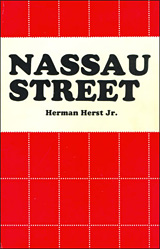 Herman Herst Jr.'s book Nassau Street is probably the most readable and enjoyable of all the philatelic canon. It is a series of stories and reminisces about philately in the 1930s and 1940s loaded with good anecdotes about many of the giants of our hobby along with reflections on where the hobby was in the year that the book was published (1960) and where stamp collecting had come from. The book was immensely popular and was on the New York Times' bestseller list for a time after its publication, indicating appeal outside the hobby. Copies are available from used booksellers on Amazon, so, if you want one, there are a few that are still available. However, books like this are hard to find, and collectors who came into the hobby after Mr. Herst's retirement have little access to the joys of his philatelic vision.
Herman Herst Jr.'s book Nassau Street is probably the most readable and enjoyable of all the philatelic canon. It is a series of stories and reminisces about philately in the 1930s and 1940s loaded with good anecdotes about many of the giants of our hobby along with reflections on where the hobby was in the year that the book was published (1960) and where stamp collecting had come from. The book was immensely popular and was on the New York Times' bestseller list for a time after its publication, indicating appeal outside the hobby. Copies are available from used booksellers on Amazon, so, if you want one, there are a few that are still available. However, books like this are hard to find, and collectors who came into the hobby after Mr. Herst's retirement have little access to the joys of his philatelic vision. - Posted April 16, 2018Read more »

Collectors and dealers of the 1930s and 1940s looked at the obstacles to increasing the popularity of US philately and decided that unnecessary complexity was off-putting to new entrants to the hobby. This feeling was created by four things. First, the classic one cent and ten cent 1851 with their different minor plate types being elevated into major catalog number status was felt to be off-putting, creating major rarities (such as Scott #5) where the same type of variety of a more minor country than the US might not even be listed. Second, there were the numerous
- Posted April 16, 2018Read more »
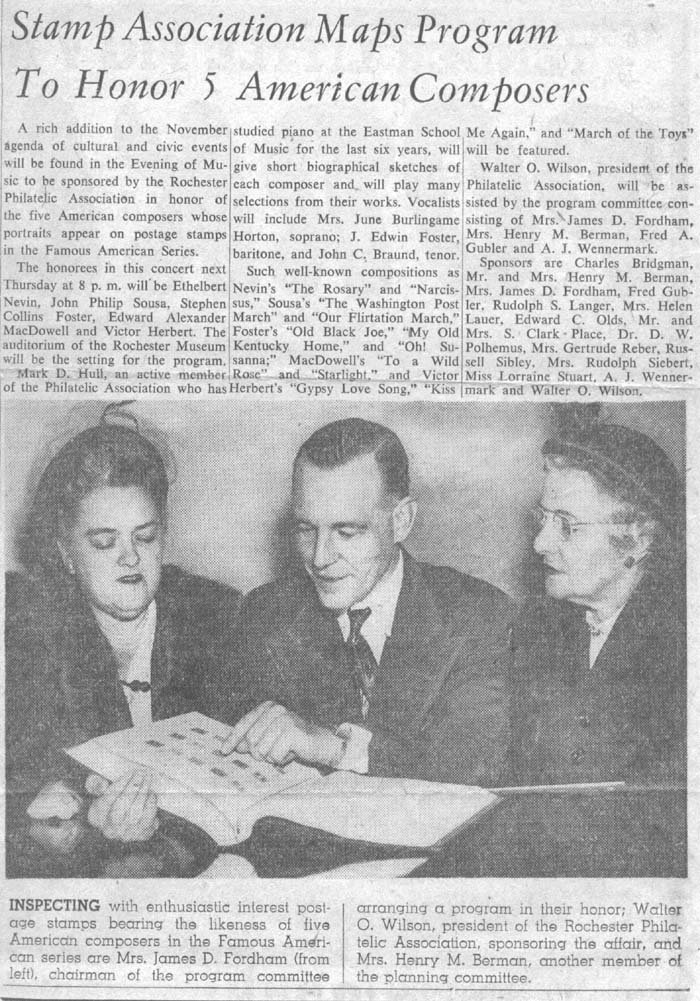 Unbeknownst to a mass of collectors, one of the major changes brought about in our hobby as a result of the Internet age is greater democratization. In the pre-1900 period, philatelic organizations didn't count for much- there were few of them, and they had few members. The American Philatelic Society emerged as a powerful group in the 1950s, and membership in the society became critical to success as a stamp collector or dealer. Stamp insurance was very difficult to obtain back then if you weren't an APS member, as APS stamp insurance was not only inexpensive but had expansive coverage limits and easy underwriting requirements. In this period too, most better stamps were sold at Public Auction, and extensive philatelic references were required by most auctioneers before your bids would even be accepted. APS membership provided the credentials that collectors and dealers alike needed to vet the transactions that were necessary to the hobby. As the societies became powerful,
Unbeknownst to a mass of collectors, one of the major changes brought about in our hobby as a result of the Internet age is greater democratization. In the pre-1900 period, philatelic organizations didn't count for much- there were few of them, and they had few members. The American Philatelic Society emerged as a powerful group in the 1950s, and membership in the society became critical to success as a stamp collector or dealer. Stamp insurance was very difficult to obtain back then if you weren't an APS member, as APS stamp insurance was not only inexpensive but had expansive coverage limits and easy underwriting requirements. In this period too, most better stamps were sold at Public Auction, and extensive philatelic references were required by most auctioneers before your bids would even be accepted. APS membership provided the credentials that collectors and dealers alike needed to vet the transactions that were necessary to the hobby. As the societies became powerful, - Posted April 16, 2018Read more »
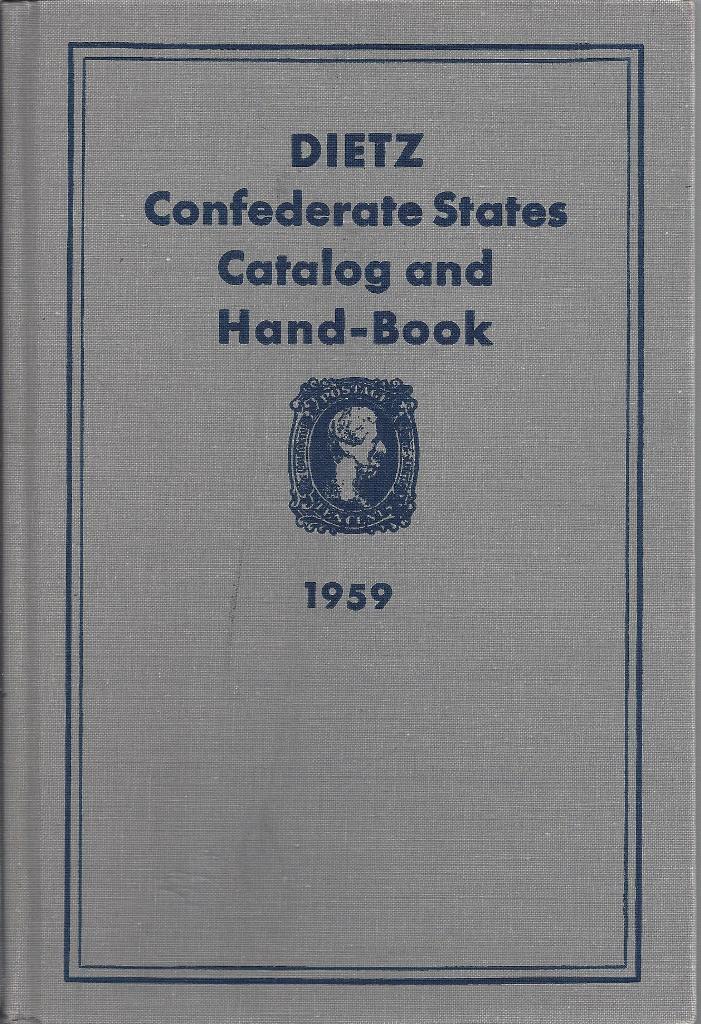 Confederate States philately has always enjoyed enormous popularity. The stamps are interestingly printed, served a real postal purpose, and the story behind the stamps has real philatelic appeal- large nation, rent by discord, one section withdraws from union to preserve the ability to own human beings as property, the other side fights to retain the union and end slavery. If it wasn't true it would seem unbelievable.Losers in wars and political conflict tend to gravitate to the stamps and postal history of their side as a way to identify with their cause and ameliorate their sense of loss. Baltic States philately between WWI and WWII, when these countries had been absorbed by the Soviet Union, is a case in point. Confederate States philately has always enjoyed
Confederate States philately has always enjoyed enormous popularity. The stamps are interestingly printed, served a real postal purpose, and the story behind the stamps has real philatelic appeal- large nation, rent by discord, one section withdraws from union to preserve the ability to own human beings as property, the other side fights to retain the union and end slavery. If it wasn't true it would seem unbelievable.Losers in wars and political conflict tend to gravitate to the stamps and postal history of their side as a way to identify with their cause and ameliorate their sense of loss. Baltic States philately between WWI and WWII, when these countries had been absorbed by the Soviet Union, is a case in point. Confederate States philately has always enjoyed - Posted April 16, 2018Read more »The first country to issue Official stamps was Great Britain. It did so at the same time that it issued the first stamp, the Penny Black. But Great Britain was scooped in one major aspect of Official stamps by the United States Post Office, and that was in the issuance of Departmental Officials— Officials for use by individual government departments. The United States issued its first Departmental Official in 1870 and Great Britain followed some ten years later.Official stamps are issued by postal agencies more as a form of accounting than because of any postal need. Most countries (including France, Belgium, Japan, indeed the vast majority of postal entities) have never issued Official Stamps. It's not that their government departments don't use
- Posted April 16, 2018Read more »The stamp business used to have what economists call high barriers to entry. It took a lot of knowledge, a lot of capital, and years of advertising and satisfying customers to build a good mailing list and a good stamp business. When the Internet became the preferred method of buying and selling in philately, there was considerable worry that old time stamp dealers would lose their competitive edge and that eBay and Stampwants would, overnight, make any seller a competitor of dealers who had spent decades building their sales networks.It has worked out somewhat differently. It is true that today anyone can be a seller with immediate access to the worldwide philatelic community. Twenty years ago only a few professionals had access to selling stamps to more than
- Posted April 16, 2018Read more »Most philatelists, and especially most stamp dealers, see a dichotomy between traditional stamp collecting and the collecting of stamps on covers, which has come to be called postal history. Years ago, the best dealers and collectors of covers and postal history came up from the ranks of traditional philately. It was only after someone knew the stamps of a particular area and had collected and studied them for years that they would begin to study the use of those stamps and add covers to their collections. This fundamental way that most collectors began their hobby began to change around 1970 when collectors and dealers started to specialize in covers without any real knowledge of the stamps that franked their covers. This change occurred because increasing philatelic popularity had made prices so high that creating traditional stamp collections was too daunting for many collectors, and they moved into the hobby as cover collectors before having any real grounding in stamps.
- Posted April 16, 2018Read more »There are four tiny European
 states that maintained independence into modern times, more as an historic quirk than for any other reason. As Europe progressed through the centuries, hundreds of principalities and smaller sovereign units that had existed were merged into the German, Austro-Hungarian and Italian Empires at the end of the Nineteenth Century. This consolidation produced the geopolitical borders that we have today. Four tiny countries didn't join (or weren't forced to join) larger units, mostly because their isolation made them not worth the trouble. Now, they continue to exist
states that maintained independence into modern times, more as an historic quirk than for any other reason. As Europe progressed through the centuries, hundreds of principalities and smaller sovereign units that had existed were merged into the German, Austro-Hungarian and Italian Empires at the end of the Nineteenth Century. This consolidation produced the geopolitical borders that we have today. Four tiny countries didn't join (or weren't forced to join) larger units, mostly because their isolation made them not worth the trouble. Now, they continue to exist - Posted April 13, 2018Read more »Each Country has quirky collecting habits related to how their stamps were printed and to the marginal markings that originally contained printer's information or advertising. Israeli collectors collect their stamps with tabs, which are inscriptions that appear in the margins and which are collected attached to the stamps themselves. French collectors collect milliseme pairs, which are margin pairs with plate numbers between the two stamps. These pairs are from large sheets that were later cut into panes to be sold at the Post Office. British collectors collect gutter pairs with color registration markings-these are called traffic light gutter pairs because of the colorful display in the margins.The most popular and significant of all marginal
- Posted March 30, 2018Read more »One of the more ironic things about specialized philately is that collectors are far more likely to collect older issues in a highly specialized degree than they are to collect more modern stamps in the same degree of detail. Penny Blacks are specialized by plate number. There were 12 plates- each of which can only be told by detailed examination against known plated stamps) and 240 positions on each sheet (one for each set of check letters) making 2880 collectible stamps of the first postage stamp alone. Of the Penny Red of 1841, the second GB stamp, there are tens of thousands of different collectible varieties. Collectors of modern stamps usually collect only one of each, but this is out of habit. Many collectible varieties of modern stamps exist, and collectors of United States should be aware of this. The decision of how specialized to make your collection is yours alone, but this decision is easier to make if you are informed about varieties that are available.
- Posted March 29, 2018Read more »The specialty area of United States Revenues may be the most fertile collecting specialty for collectors. Scott lists the general issue revenues which are interesting enough. But it is in the field of the specialty revenues where collectors have had the most fun. There are specialty Revenues for everything from Perfume Tax Stamps to Consular Office Revenues (which paid the tax on things like passports and visas), to even Marijuana Tax Stamps (which paid a tax on the illegal drug). Incidentally, Marijuana Tax Stamps were declared unconstitutional by the the Supreme Court as a form of self incrimination since it was illegal to sell marijuana without buying the stamps and paying the tax. But since it was illegal to sell pot anyway, this was ruled law enforcement double dipping. There are over thirty specialty revenues that the Scott catalog lists, and scores more of Scott unlisted revenue types— most of which are called "Tax Paids" and are excluded
- Posted March 27, 2018Read more »
 Probably the best philatelic magazine that is published anywhere in the world is the "The American Philatelist", which is the monthly journal of the American Philatelic Society. Over eighty pages each month, the magazine serves partly as a member bulletin. But the real interest each month is the numerous detailed articles written by members, mostly about their collections and collecting interests.Philatelic scholarship has morphed over the years and "The American Philatelist" has been leading the change. This transformation has been the work of the editor of "The American Philatelist", Barbara Boal. Years ago, articles in philatelic journals carried titles like "A Study of the Cameos of the 1851 Portugal Dom Pedro's". These articles
Probably the best philatelic magazine that is published anywhere in the world is the "The American Philatelist", which is the monthly journal of the American Philatelic Society. Over eighty pages each month, the magazine serves partly as a member bulletin. But the real interest each month is the numerous detailed articles written by members, mostly about their collections and collecting interests.Philatelic scholarship has morphed over the years and "The American Philatelist" has been leading the change. This transformation has been the work of the editor of "The American Philatelist", Barbara Boal. Years ago, articles in philatelic journals carried titles like "A Study of the Cameos of the 1851 Portugal Dom Pedro's". These articles - Posted March 23, 2018Read more »Look for stories about the deteriorating relationship between Japan and China to be in the news over the next year. The two countries have a dispute over some islands in the China Sea, and the Japanese recently elected a far more aggressive government to deal with the perceived Chinese threat to Japanese interests. The Chinese are reacting to the feeling that the Japanese have long taken advantage of them. The chances are that this dispute will simmer along below the boiling point, mostly because both countries do so much business together, and they have so much to lose if the confrontations go beyond the verbal stage. But face must be saved, and should this area heat up beyond words, it wouldn't be the first time in history that countries put pride before self interest.



